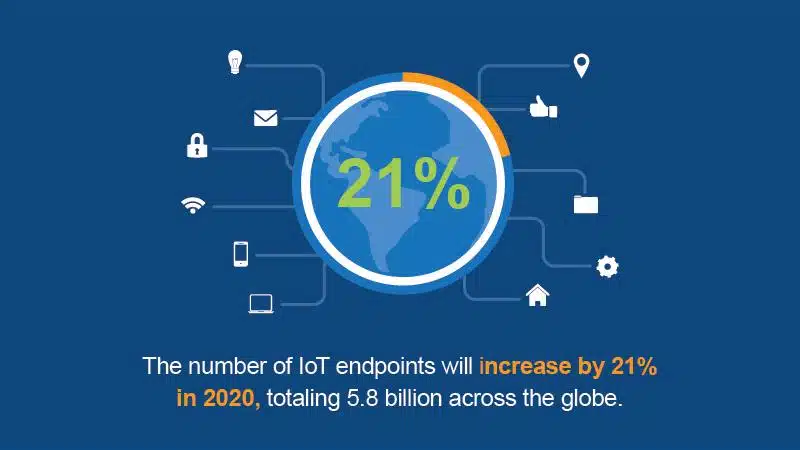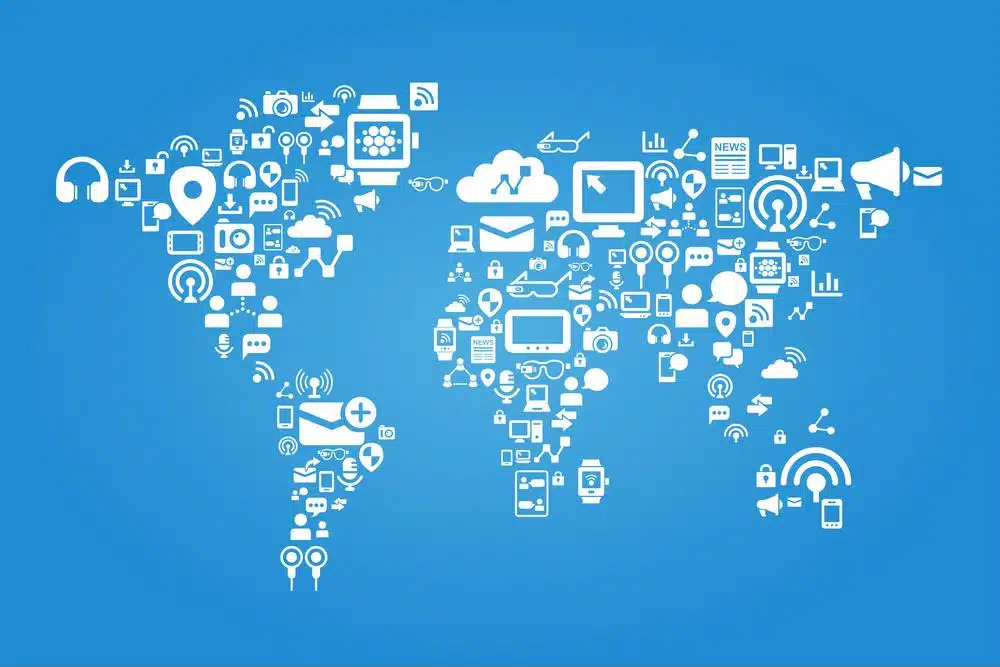Internet of Things (IoT) markets continue to grow at a rapid pace, even with recent public health events disrupting various industries. According to Gartner, the number of IoT endpoints will increase 21% in 2020, totaling 5.8 billion across the globe by the end of the year.
More connected devices tapping into networks present a major revenue opportunity for communications service providers (CSPs), but a number of issues need to be addressed first. In particular, CSPs will need to determine how supporting IoT devices will impact their billing processes and make whatever changes are necessary.
It will certainly be worth the effort, though. If you can effectively navigate the nuances of IoT billing, your organization can bring in more revenue from new markets and users.
The Internet of Things continues to grow
For the uninitiated, the Internet of Things refers to the rapidly expanding network of connected devices in the world. IoT devices and environments can range from IP-enabled security cameras to smart homes and autonomous cars. With each of these IoT machines representing a new endpoint that uses bandwidth and strains network resources like any smartphone, PC or laptop, the impact on CSPs will likely be immense.
Take the utilities IoT market, for example. Gartner researchers predicted that this sector will outpace all others in terms of growth. Fueled by demand for smart metering and sensor-based electrical grids, the number of IoT endpoints in this field will increase 17% in 2020, reaching 1.37 billion.
That’s just one facet of IoT to consider; there are so many applications for this technology that can touch everyday life. Over the next few years, CSPs will have to contend with more connected devices using their services and draining network resources.
What does the IoT mean for billing?
The good news is service providers can bill IoT devices just as they could for any traditional endpoint – assuming they have a flexible and dynamic billing platform. With the right IoT billing system, CSPs can rate network usage, bill IoT services and collect revenue from connected devices.
Consider the fact that the average U.S. household currently has 11 connected devices, according to Deloitte. That is a large number of endpoints to support for residential service providers. An office building or smart building could have significantly more IoT devices using commercial CSP services, generating billable revenue.
There are a number of technological and logistical hurdles that need to be cleared before organizations can realize IoT’s potential, however.
Build an IoT billing interface
Like any other endpoint, IoT devices are billed differently depending on a variety of factors. The location of the device, where the connection was initiated and the amount of data used all impact rating usage. As such, IoT billing is a complex process that brings together several components, which need to be accurately measured to properly bill users.
Failure to establish adequate IoT billing mechanisms could lead to billing errors that create friction between the customer and the service provider. If these issues are not addressed, organizations could see increased churn rates as dissatisfied customers switch CSPs.
 The IoT is growing at a fast rate.
The IoT is growing at a fast rate.Provide IoT billing and pricing options
The IoT is a heterogeneous environment consisting of many disparate devices and endpoints. How customers use IoT devices will vary drastically as well. As such, IoT billing needs to be flexible and capable of supporting every arrangement and setup. That also means CSP billing systems should provide various pricing plan options to fit every customer and their usage patterns.
There are a lot of different options to consider:
- Fixed rate
- Variable rate
- Single tier
- Rolling tier
- Usage-based pricing
Each one has its merits. Giving customers more pricing and billing options will empower them to choose the right plan for their needs. This approach also reduces customer friction and churn resulting from rigid pricing models.
For example, if users have no choice but to pay a flat rate for every new IoT device added to their account, rather than pay based on the amount of data used, that can be a frustrating experience. Conversely, customers may be willing to add more IoT devices with more flexible pricing options, which can lead to more data usage and recurring revenue.
It’s important that CSPs closely monitor pricing models and how they compare with customers’ usage rates. Organizations may find that they are not adequately billing for the amount of data used by IoT devices. Collecting data on every aspect of your IoT billing platform can bring execution gaps to light, identify more effective pricing and rating methods and help service monetization efforts.
Accurately capture IoT revenue with usage-based billing
Accounting for IoT data usage adds a number of wrinkles to the rating and billing process. Some devices may only be used intermittently, while others are always active. Certain users may be data hogs, requiring around-the-clock access to robust networks and a significant amount of bandwidth.
Dynamic usage-based billing helps reconcile the nuances of IoT billing, streamlining and simplifying what would otherwise be an incredibly complex and time-consuming process. Without a sophisticated billing system, CSPs would likely have to manually manage various aspects of the billing cycle.
On the other hand, usage-based billing solutions automate rating and billing processes to account for shifting variables and patterns, allowing CSPs to keep up with the constantly changing IoT environment.
In addition, IoT billing platforms can capture real-time data pertaining to usage patterns, customer experience metrics and more to help organizations improve service delivery, billing workflows and customer satisfaction.
The IoT market produces just as many headaches as it does opportunities, but it’s worth the effort for CSPs. Addressing IoT billing challenges should be a major priority for any organization hoping to capitalize on the growth of network-connected devices and expand its footprint into new areas.
One of the biggest risks preventing CSPs from growing their business is an outdated, legacy billing platform that was not built to deliver the services needed today. By upgrading to a flexible and dynamic solution, CSPs can accurately rate IoT data usage, bill for rendered services and start generating more revenue from this lucrative market. IDI Billing Solutions’ industry-leading telecom billing and OSS provides all the functionality and features necessary to succeed in an IoT-driven world.


